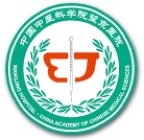
Liguo Zhu (at centre), former president of Wangjing Hospital, demonstrates spinal manipulation on a robotic training system.
Twenty years ago, Liguo Zhu was searching for answers to lingering questions about spinal manipulation, a widespread, but sometimes controversial, treatment for neck pain.
“How can we better ensure that spinal manipulation is safe and effective?” wondered Zhu, an orthopaedic physician, and former president of Wangjing Hospital of the Chinese Academy of Traditional Chinese Medicine (TCM), in Beijing. Watching a group of young physicians practicing cardiopulmonary resuscitation on a robotic dummy gave him the answer: a robotic training system.
Spinal manipulation is the application of a controlled thrust to realign the spine. It is widely used in China to treat orthopaedic disorders of the spine that don’t require surgery. However, the lack of a standardized approach can lead to serious injury.
Robot solution
With almost 20 years’ experience in spinal manipulation, Zhu and the team have now pioneered a robotic training system to help young physicians hone skills that are traditionally passed down from experienced practitioners.
“The efficacy and safety of spinal traction relies heavily on experience. We wanted to turn our experience into a standardized scientific approach that could be repeated, evaluated and shared with the wider world,” says Zhu, now a member of the Chinese Academy of Engineering.
He developed rotation-traction manipulation to treat cervical spondylosis — a degenerative condition that affects the neck. Working with scientists from the Beijing Institute of Technology, Zhu’s team aimed to develop a robotic system1 to train physicians in manipulation. It can simulate the biomechanical behaviour of the neck during traction and provide feedback to physicians on their performance during training.
One of the biggest challenges was to make sure the robot can mimic the mechanical properties of the cervical spine under manipulation. The team used a nonlinear spring — a type that shows unusual changes in force when compressed — to simulate the varied stiffness of the cervical spine and an electromagnetic clutch to simulate the sudden disengagement of the cervical vertebrae during traction.
Six efficacy indicators
The team also studied the biomechanical mechanism of spinal manipulation, and established six indicators for an effective technique. When a physician uses the robot to train, they are given feedback immediately on how their efforts match up to these standards.
The system is already being used in eight TCM universities in China to train orthopaedic physicians.
“This robotic training system can help physicians get the skills more rapidly,” says Zhu. “We hope more patients will be able to be treated with safe and effective spinal manipulation.”
Zhu has bigger ambitions for this robotic system. He will continue to improve it and hopes it can be adapted to train physicians to treat injury of the lumbar (low back) vertebrae and ankle joints.
Zhu envisions that it will eventually develop into a wider treatment process. “There is a long way to achieve this goal,” Zhu says. He calls for combined efforts between medicine and engineering, and the use of modern digital technology.


